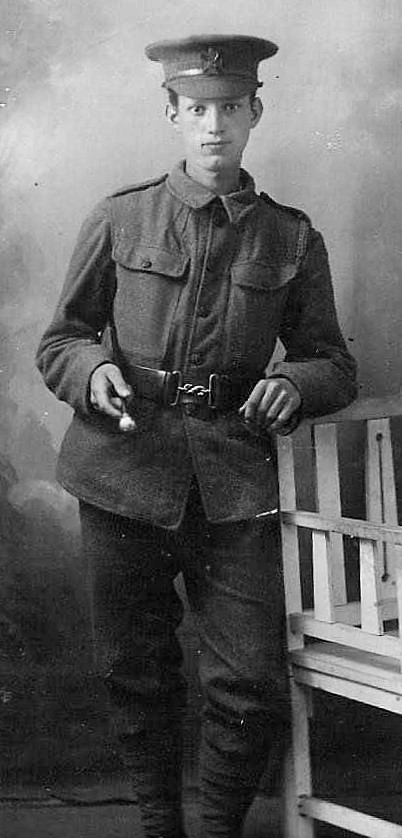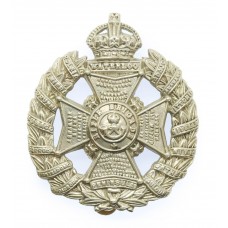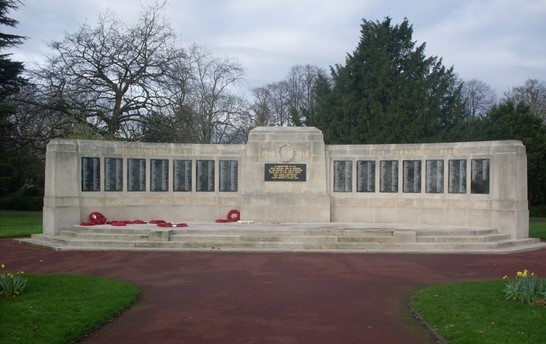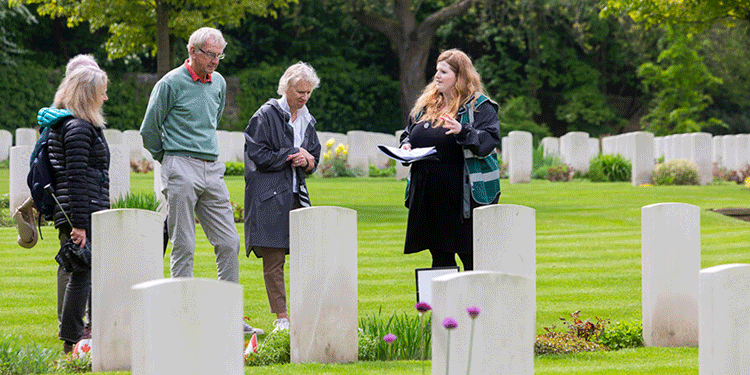
Frederick James Tucker was born on 7 July, 1893, at 132 Downham Road, in Islington, Middlesex, the second of seven known children to Frederick James Tucker, a sorter with the General Post Office, and Esther Jane Tucker (formerly Lack). He had four sisters and three brothers: Lucy Adeline (1892); William Arthur (1895); Ernest John (1897); Mable Esther (1899); Albert Edward (1901); and Maud Alice (1903).
By 1901, the family was living at 9 Southgate Road in Islington, and at the 1911 census Frederick's siblings were living at 31 Dorchester Road, New North Street. Frederick and his parents were not present and have not been located.
His brothers William Arthur and Ernest John emigrated to Canada and served in the Canadian Infantry during World War One, Ernest being wounded.
On 24 January, 1915, Frederick James Tucker married Florence Sarah Convoy, at Barking Parish Church, in Essex. They were to have two children: Thomas Frederick (1915); and Lucy Alice (1917). When he married, Frederick was living at 25 Trafalgar Street, in Barking and was employed as a barrowman. His widow and children later lived as 12 Trafalgar Street.

Frederick James Tucker's service record has not survived, and what is known has been extrapolated from other sources.
As Frederick Tucker he enlisted at Barking in the King's Royal Rifle Corps (KRRC) as a rifleman, no. R/22834, and joined the 1st Battalion.
The 1st Battalion, KRRC, had been in France since August, 1914, and by the end of 1915 it belonged to the 99th Brigade, in the 2nd Division. By virtue of the fact that Frederick Tucker did not qualify for the 1914-15 Star, his service in France did not commence until 1916 onwards.
Rifleman Tucker joined the 1st Battalion in France, and it is possible that he was wounded or injured, resulting in him leaving the battalion.


He transferred to the Rifle Brigade as a rifleman, no. B/203341, and was posted to the 13th (Service) Battalion.
The 13th Battalion had been formed at Winchester in October, 1914, and had landed in France in July, 1915, as part of the 111th Brigade, in the 37th Division.
By April, 1917, the battalion was at Maisnil St. Pol carrying out general training. On 5 April it marched, and reached Agnez-les-Duisans on 8 April and bivouacked. It left camp near Wagnonlieu on 9 April and marched to an assembly position round the north side of Arras near Fred's Wood and became the reserve battalion in support of an attack.
On 10 April, 1917, the battalion was the reserve battalion during an attack on Monchy-Le-Preux, and dug in.
At 5.00 am on 11 April the battalion was the left attacking battalion, and attacked with two companies forward, in two waves, and one company in two waves in support. The village was entered and the battalion was relieved at 10.30 pm, and moved back to Battery Valley.
The war diary mentions Rifleman Tucker during this operation, indicating that he was employed as a stretcher-bearer.
The battalion marched back to Arras the next day, and on 13 April moved back to Agnez-les-Duisans and thence to Villers-sur-Simon, where it remained for five days before returning via Habarcq to Agnes.
On 20 April the battalion relieved the 1st Battalion, Rifle Brigade, in the support trenches north of the River Scarpe, running through the village of St. Laurent-Blagny.
The second phase of the Battle of Arras commenced on 23 May.
One hour before zero hour (4.45 am) the battalion formed up, and at zero hour the battalion moved forward in artillery formation. Soon after the enemy put down a heavy barrage of 5.9" shells. Casualties were very heavy going through this barrage but the men continued to advance without halt. Just before reaching the enemy's wire they came upon what appeared to be assembly trenches. The first wave halted in these, all the officers having been killed or wounded. The second wave joined the first and together they pushed through the enemy's wire and into the Black Line, in front of the village of Gavrelle, which they consolidated. The Germans attempted a bombing attack from the right flank but were defeated. Due to casualties command of the battalion fell to the adjutant.
A major sent forward to assume command of the battalion found it disorganised and mixed up with units of the 63rd (RN) Division, and all that could be found were 4 officers 120 other ranks.
The enemy was shelling the line heavily and the battalion was ordered to move into shell holes forward of the Black Line. It then moved forward to support the 13th Battalion, KRRC, and take positions near the village. The enemy were holding the high ground and being reinforced, and it was decided to withdraw the remaining men back to the Blue Line and form a defensive flank. The move was carried out across the open in skirmishing order, and the new position was consolidated.
During the early hours of 24 April three Lewis Guns, which had got mixed up with the 63rd Division returned. At 3.00 pm, under an intense artillery bombardment, ending with gas shells, the enemy counter-attacked, but failed, although the gas attack resulted in the battalion having to wear gas masks for some time.
On the night of 24/25 April the battalion continued to consolidate its position and was shelled the following night. The battalion continued to mount further attacks until it was relieved on 30 April.
Rifleman Tucker was listed as being killed in action on 23 April, 1917, the first day of the attack at Gavrelle. He was aged 23.



